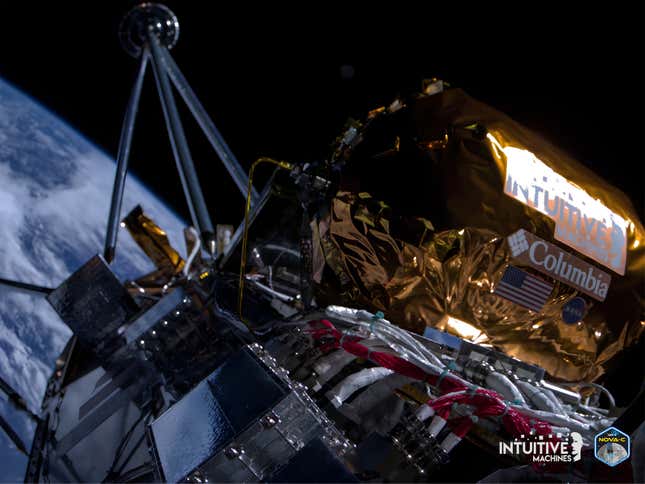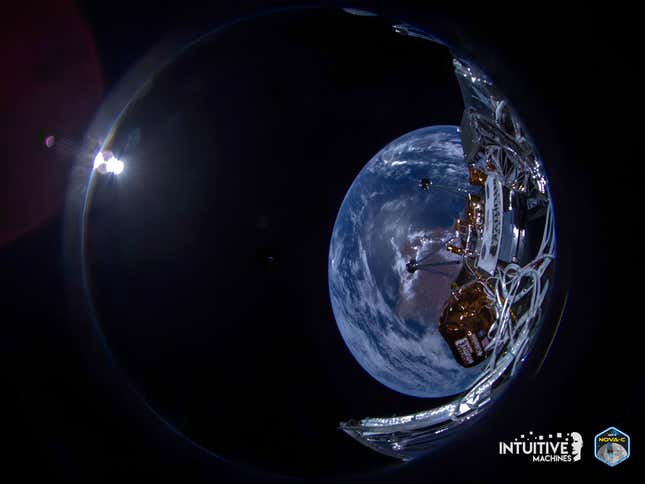Intuitive Machines’ Odysseus is gearing up for its attempt at a potentially historic landing on the Moon’s surface later this week. Things are looking good so far for the lunar lander, which beamed back breathtaking views of Earth from space.
The IM-1 mission recently transmitted the first batch of photos that were captured shortly after launch, revealing a series of selfies that show parts of the spacecraft with Earth’s familiar blue as an iconic backdrop.The images were taken on Thursday, February 15 after Odysseus separated from SpaceX’s Falcon 9 rocket, according to Intuitive Machines.
Advertisement

Advertisement
Odysseus reached its intended Earth orbit approximately 48 minutes after launch and established radio communication with the mission operation center in Houston, stabilized its orientation, and initiated solar charging.
Advertisement
On Friday, the company fired the engine of its Nova-C class lunar lander, which uses liquid methane and liquid oxygen, and confirmed that Odysseus is in “excellent health.” Flight controllers are preparing the lander for a series of trajectory correction maneuvers that are designed to place it in orbit around the Moon on Wednesday. From there, the lander will have an opportunity to land on the lunar surface on Thursday evening.
If it sticks the landing—a big if, considering what’s happened to other recent missions—Intuitive Machines will become the first company to successfully land on the Moon’s surface. Other private space ventures have tried and failed to claim that coveted title. In January, Astrobotic failed in its attempt to reach the lunar surface due to a valve issue with its spacecraft. In April 2023, Japan’s ispace Hakuto-R M1 crashed on the Moon, and Israel’s SpaceIL Beresheet lander met a similar fate in April 2019.
Advertisement

The mission is part of NASA’s Commercial Lunar Payload Services (CLPS) initiative, which aims to have a constant flow of landers headed to the Moon to deliver private and publicly owned payloads. Odysseus is packed with 12 government-owned and commercial payloads, six of which are science and technology instruments for NASA.
Advertisement
The space agency has been streaming data from its instruments on board the lander, and flight controllers will analyze this data in order to inform preparations for Thursday’s landing attempt, according to NASA.
Odysseus is targeting Malapert A crater, a site that’s 43 miles (69 kilometers) wide and about 186 miles (300 km) from the lunar south pole. This crater, composed of lunar highland material similar to the Apollo 16 landing site, is near the Malapert Massif, one of the 13 regions considered for NASA’s crewed Artemis 3 mission.
Advertisement
The mission’s success would represent a major leap for the lunar economy and establishing the Moon as a stepping stone to farther destinations in space.
For more spaceflight in your life, follow us on X (formerly Twitter) and bookmark Gizmodo’s dedicated Spaceflight page.
Services Marketplace – Listings, Bookings & Reviews